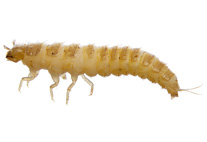Abstract
Two core species of the genus Bythotrephes Leydig, B. longimanus Leydig and B. cederströmii Schӧdler, are redescribed on the basis of the type material, topotypic material, and other materials from Western and Northern Europe. They were investigated with an application of detailed morphological analysis, including intra- and interpopulation variability and the original scheme of morphometric measurements. The neotype of B. longimanus was selected from the topotypic population of the species from Bodensee (Switzerland-Germany). The taxonomy of B. cederströmii and of the whole genus is complicated by the presence of a variety of similar forms with intermediate morphology supposed to be interspecific hybrids, which much confused previous researches. The evolutionary transformations of some morphological structures, such as thoracic limbs, abdomen, and caudal process, are analyzed and discussed. In particular, it is suggested that the internal side of the endopodites of the thoracic limbs of the second–fourth pairs grew in proximal direction, occupying the part of protopodite with the “gnathobasic” process, which remains to be homologous to those of the thoracic limbs of the first pair. The strongly reduced thoracic limbs of the fourth pair lost two terminal segments and have proved to be represented by three segments, two proximal of which are those of protopodite, while the third terminal segment is composed of the fused distal part of the protopodite and the first proximal endopodital segment, bearing transformed and specifically arranged setae. The specificity of the “gnathobasic” processes of Bythotrephes is that they are the derivatives of the second, not of the first, inner endite of the thoracic limb and for this reason they are not homologues to the gnathobases of other cladocerans and should be called pseudognathobases.
The same position of the “gnathobasic” processes is characteristic for other Onychopoda, which stresses the uniqueness of the representatives of the order among Cladocera and the whole class Branchiopoda. The abdomen of Bythotrephes was found to be three-segmented, but the third distal segment has proved to be transformed and fused with the postabdomen, participating in the formation of a long and massive caudal process. The comparison of morphological features of Bythotrephes and Leptodora clearly shows their independent homoplasic evolutionary development and distant phylogenetic position. According to new available data, the range of B. longimanus embraces large and deep lakes of Switzerland, Southern Germany, North Italy, Austria, and Great Britain, whereas B. cederströmiis. str. is certainly known only in the south of Sweden (probably also in Finland). All other B. cederströmii-like forms, supposed to be interspecific hybrids, are much more widely distributed in Eurasia from Northern Europe and Central European Russia to the Lower Volga River and Yakutia in Eastern Siberia. It is suggested that just these hybrids invaded and conquered the North American inland waters.

